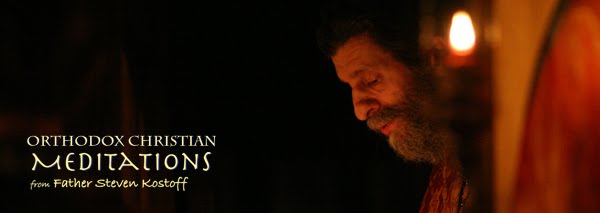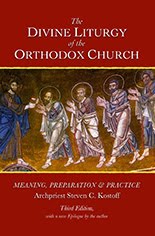Dear Parish Faithful,
CHRIST IS RISEN!
INDEED HE IS RISEN!
Bearing life and more fruitful than paradise,
brighter than any royal chamber:
Thy tomb, O Christ, is the fountain of our resurrection.
(Liturgy of St. John Chrysostom)
The “empty tomb” has been a point of endless discussion and debate among biblical scholars for quite some time now. The issue is not simply one of whether or not the tomb of Jesus was indeed empty when the myrrhbearing women discovered it on “the first day of the week.” And, if it was empty, then why was it empty? Those are theological or “faith” questions and claims that determine the difference between “believers” and “non-believers” based on how one may answer those questions. Rather, some biblical scholars who study the New Testament evidence concerning the resurrection of Christ challenge the very reliability of the empty tomb narratives in the canonical Gospels. These very scholars even going so far as to claim these narratives are basically imaginative reconstructions, for apologetic purposes, composed by the evangelists. In other words, the empty tomb narratives are not conveying to us an actual record of events; but they are actually later inventions that are used to strengthen the claim that Jesus rose from the dead. This is often called “historicized theology.”
In responding to these skeptical charges, many excellent biblical scholars have carefully demonstrated the reliability of these narratives with detailed and sophisticated arguments that skillfully and convincingly defend the solid historical nature of these narratives. The haunting simplicity of these narratives; the fact that they are “unadorned” with claims of fulfilled biblical prophecy or theological embellishment; the discovery of the empty tomb by women disciples whose testimony was not binding in first century Judaism; the fact that living disciples of Christ could have refuted any invented stories; the integrity of the evangelists(!). All of these combine to strongly support the historicity of the empty tomb narratives. As Gerald O’Collins summarizing in his book, Believing in the Resurrection:
The more we detect such a simplicity that derives from the origins of Christianity, the less plausible we find the theory that the discovery of the empty tomb was not an historical event but merely a later creation, a fictional scenario coming from the evangelist Mark. (p. 83)
And very telling is the conclusion reached by one of the world’s great “Jesus scholars,” Geza Vermes, a scholar who does not believe that Jesus was raised from the dead:
When every argument has been considered and weighed, the only conclusion acceptable to the historian must be that the opinions of the orthodox, liberal sympathizer and the critical agnostic alike – and even perhaps of the disciples themselves – are simply interpretations of the one disconcerting fact: namely that the women who set out to pay their last respects to Jesus found to their consternation not a body but an empty tomb.
Regardless of how interested or not one may be by endless discussions and debates among biblical scholars today, what is of interest to us is how integral a part the empty tomb has played within the Orthodox Christian liturgical, hymnographic, iconographic, and theological Tradition ever since the “beginnings” of the proclamation of the Gospel. At the Liturgy yesterday, on St. Thomas Sunday, we sang in the troparion: From the sealed tomb, Thou didst shine forth, O Life! The discovery of the empty tomb by the myrrhbearing women is a theme constantly brought to remembrance during the paschal season and beyond within the Church’s hymnography:
Before the dawn, Mary and the women came and found the stone rolled away from the tomb. They heard the angelic voice: “Why do you seek among the dead as a man the One who is everlasting light? Behold the clothes in the grave! Go and proclaim to the world: The Lord is risen! He has slain death, as He is the Son of God, saving the race of men.” (Hypakoe of Pascha)
When the women disciples of the Lord learned from the angel the joyous message of Thy Resurrection; they cast away the ancestral curse and elatedly told the apostles: Death is overthrown! Christ God is risen, granting the world great mercy. (Resurrectional troparion, tone 4)
The empty tomb was the great “sign” that something mysterious occurred following the death and burial of Jesus of Nazareth. And this sign found its proper interpretation when the Risen Lord appeared to His female and male disciples – in that order. The tomb was empty because Jesus had been raised from the dead! Christians do not believe in the empty tomb, but in the Risen Lord. But Christians cannot believe in the Risen Lord if the tomb was not found to be empty. The empty tomb may be a “secondary” sign of the resurrection, but it is essential to the claim that Jesus had been raised from the dead. The empty tomb reveals that it is a fully embodied life – and not a disembodied life – that is the ultimate goal of a glorified life in the presence of God. This is one of many reasons why all four evangelists include accounts of the discovery of the empty tomb as climactic points of their respective Gospels.
In a section of his book, Believing in the Resurrection, entitled “The Sign of the Tomb,” Gerald O’Collins eloquently comments on the significance of this great sign:
First, in the New Testament the empty tomb stood for a return from the dead and all that such a return implied. The burial of people signified that they were removed from the land of the living and had fallen into the power of death …
Where tombs express the finality and irrevocable loss of death, Jesus’ open and empty tomb symbolized the fullness of the new and everlasting life into which he had risen. Here the emptiness of the tomb, paradoxically, indicated the fullness of life into which the risen Jesus had entered. Graves naturally suggest the quiet decay of an existence dissolved by death. The empty tomb of Jesus symbolized the opposite, the complete life that had overcome the silence of death.
Second, the emptiness of Jesus’ grave reflects the holiness of what it once held: the corpse of the incarnate Son of God, who lived totally for others and died to bring a new covenant of love for all people. This ‘Holy One’ could not “experience corruption” (ACTS 2:27)
Third … God did not discard Jesus’ corpse but mysteriously raised and transfigured it, so as to reveal what lies ahead for human beings and their world. In short, the empty tomb in Jerusalem forms God’s radical sign that redemption is not an escape to a better world but a wonderful transformation of this world. Seen that way, the open and empty tomb of Jesus is highly significant for anyone who want to appreciate what redemption means. (p. 94-95)
As others engage in the debate over the empty tomb, let us with a living faith gaze into that empty tomb as did the myrrhbearing women and some of the disciples and “hear” the voice of the angelic proclamation: “Do not be amazed; you seek Jesus of Nazareth, who was crucified. He has risen, he is not here; see the place where they laid him” (MK. 16:6).
CHRIST IS RISEN! INDEED HE IS RISEN!












